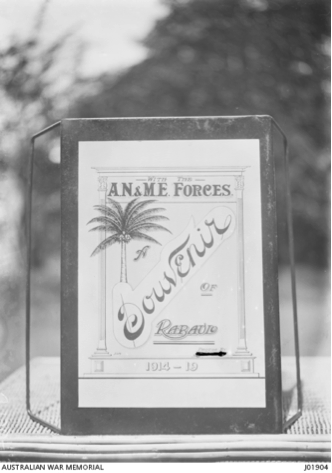War Trophies from ‘ex’- German New Guinea
Wherever Australians go, there will be souveniring – so what happened when 1500 Australian naval and military men occupied German New Guinea in 1914? Soon there was no Mauser pistol, bullet or bayonet left. German war trophies were substituted with New Guinean artefacts, creating in the process a unique collection now held at the Melbourne Museum.
Christine is giving a talk on her research on ethnographic collecting in New Guinea during WWI: ‘It’s a long way to Rabaul … but Goulburn’s boys got there’: Shop window displays as public performances of authentic war experiences. (conference Art, War & Truth, ANU Canberra 14-15 February).
The first task Australia undertook in WWI was the capture of German wireless stations in the Pacific, and the occupation of German New Guinea. Of the 1500 volunteers a great number opted to transfer to ‘real’ war at the western front soon after, traveling through Australia on the way. During 1915 and 1916 more were discharged on health grounds, or given furlong to come to the mainland. These soldiers returning home brought with them ‘mementos’ (e.g. German cutlery), ‘war trophies’ (e.g. Mauser pistols) and ‘curios’ (e.g. spears and pottery) that they draped on tables during local talks, and exhibited in shop windows. Newspapers extended these displays by describing them and adding tales of adventure and war. This talk explores how these exhibitions and installations of war and ethnographic objects, together with tales, stories and requests for donations (for example for the Belgium relief fond or the local soldiers’ memorial,) combined to form a performance of authentic and authenticated war experiences.
This research is undertaken in collaboration with the South Australia Museum (Barry Craig), and the Melbourne Museum; it is supported by a Darling Foundation Grant and an ARC Future Fellowship.
